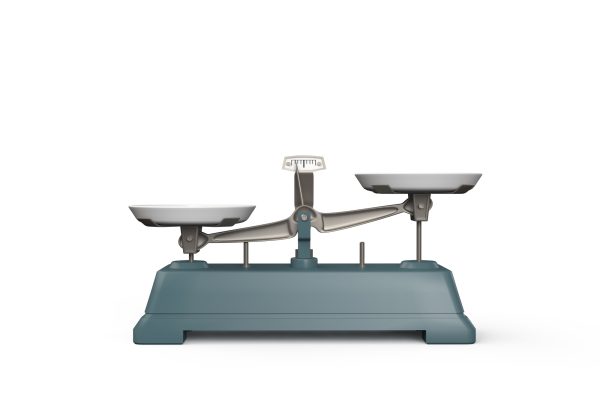Europe – Looking Attractive

The surge in global equity markets since late March, led by the major markets of China and the U.S., has left Europe behind and stocks there are receiving scant attention. Ranking last of the big three regional powers in year-to-date equity performance is not an uncommon position for Europe. In dollar terms, the pan-European STOXX 600 Index lags both the U.S. (S&P 500) and China (CSI 300) over the last year, three years, and ten years ending July 20th. With such consistent also-ran performance, investors too easily dismiss the importance of the region in their investment portfolios. Looking forward, we believe this is a mistake.
In fairness, Europe’s year-to-date performance is not as poor as the STOXX index suggests, nor is the U.S. performance as strong. Much of the performance disparity is structural. For instance, the S&P 500’s return of +1.74% year-to-date through July 20th has been propelled by investors piling into the big five U.S. technology giants. (This was highlighted by my colleague, Randall Coleman, in the July 13th commentary entitled “Recovery for the S&P 495”). The five big tech names now account for an incredible $6.6 trillion in market cap, or 23% of the index. The remaining 77% of the S&P suffered a drop of 5.42% year-to-date through July 20th. Europe, down 7.86% over the same period, has been negatively impacted by its poorly performing finance sector, which accounts for 18% of the index. Excluding finance, the STOXX 600 loss measures a much more competitive 2.86%.
Europe – Looking Attractive
Although the second most significant economy in the world behind the U.S. in nominal terms and China in purchasing power parity terms, the European Union is rarely viewed as a leading global economic power. This is true even within Europe, as only 9% of participants in a recent EU 10 survey ranked Europe as a world-leading economy compared to 42% for China and 38% for the U.S. Lack of political unity engenders this reputation, and stimulus plan negotiations last week highlighted this ongoing challenge. Needing a recovery package to rescue Europe from its deepest crisis since World War II, the leaders spent a grueling, contentious 90 plus hours in negotiations. To say there was intense, spirited debate based on ideological differences does not capture the essence of the Summit. The negotiations were quarrelsome and rife with insults, jeers, and fist pounding. It’s not clear that an agreement would have been reached at all without the walkout of Germany and France, the most important nations to any proposed compromise. Predictably, the “Frugal Five” northern nations of the Netherlands, Austria, Sweden, Denmark, and Finland sought a more limited package since they would be financing the less fiscally sound, some say wasteful, southern “Club Med” group of Italy, Spain, Greece, Portugal, and France. The power broker here is Germany, which normally sides with the Frugals. Before the pandemic, Germany adamantly opposed any kind of EU debt issuance, worried its local citizen taxes would again aid countries like Greece as they did during the financial crisis. But Chancellor Merkel, understanding the gravity of the situation, made a 180-degree turn and pursued debt mutualization. The final agreement totaled 750 billion euros ($869 billion) split between a grant of 390 billion euros and loans of 360 billion. Despite the leaders’ cheers, the deal’s near-term ability to lift the continent out of the coronavirus recession is debatable as the spending spans several years spread over 19 countries. Multiple restrictions on how the money is spent, with mechanisms to freeze spending if recipient countries fail in their reforms, suggest the economic impact will be limited. That said, France’s leader Macron calling the deal “truly historic” is correct in that the EU, for the first time, will raise money through bonds issued by the European Commission. This new fiscal weapon complements the monetary tools of the European Central Bank. The European Commission can be described as the Executive Branch of the EU, but without public elections. The EC can make laws and now raise funds from collective debt, and specify how the funds are spent. These are country-like government functions giving the EU greater political power. Moreover, the EC can pursue political agendas with fewer of these lengthy contentious summits where agreement is seldom reached absent an existential threat. Although this new stimulus plan, amounting to approximately 5% of Europe’s GDP, in and of itself will probably not lift the region out of recession, the foundation has been laid for future stimulus and greater economic vitality.
This new political development has not been lost on the euro, which reached its highest level since September 2018. Note, the currency is also supported by the continent’s better management of COVID-19 compared to the U.S. Euro strength can boost annualized equity returns for U.S. investors in euro-based equities by several hundred basis points a year and is almost always an important component when foreign equities lead U.S. equities. Despite recent gains, the euro, by several metrics, is undervalued compared to the greenback, and we believe investors will benefit by including euro-based and other European currency-based equities in their portfolios. The diversification benefit takes on added importance as the world increasingly evolves into three trading blocks engendered by the ongoing U.S./China trade war. The trade conflict and disruption across supply chains has pressured Asia, Europe, and the Americas to increasingly pursue more intra-regional trade. We expect markets to become less synchronized in this environment, heightening the need and the value of regional diversification in equity portfolios.
Most importantly, Europe hosts leading companies of all sizes in their respective fields. Nestle, LVMH, Schneider Electric, Givaudan, and SAP are some notable large cap examples, but the ACM International ADR, Global Growth, and Global Dividend portfolios include high quality, profitable, faster growing, well-managed Europe-based companies in the small cap and mid-cap size ranges as well. With over 50% of the portfolio in Europe, the ACM International ADR portfolio provides investors with an elegant investment vehicle to participate in the coming Europe transformation from also-ran to a true global leader.




LATEST ARTICLES